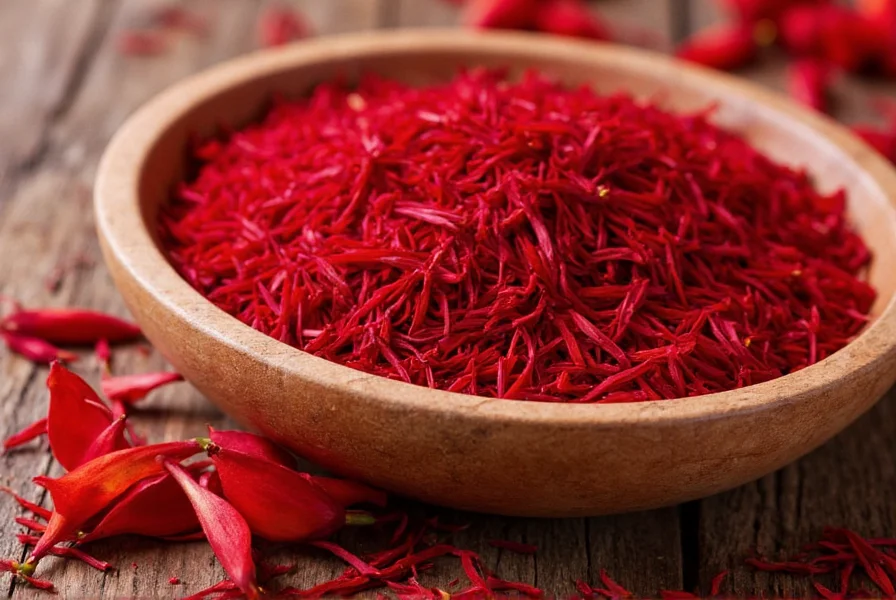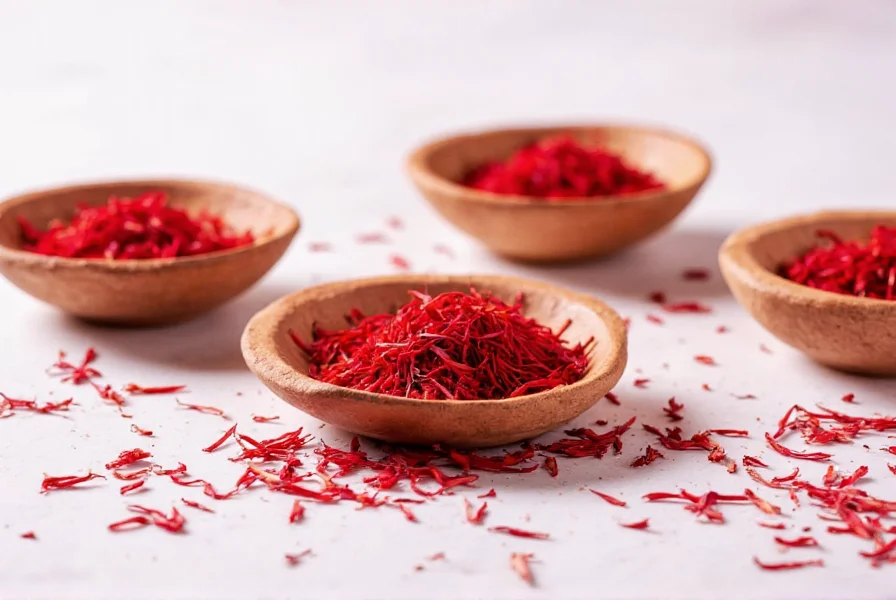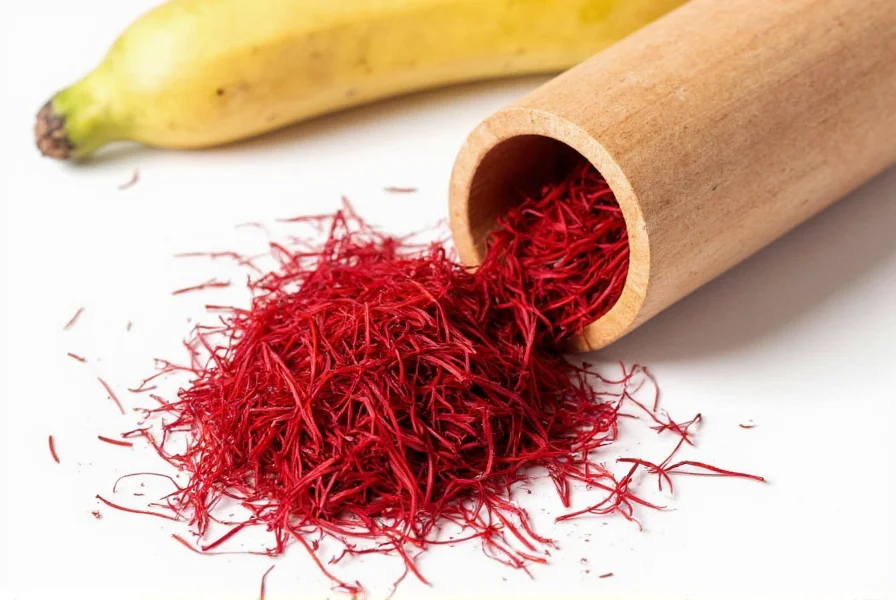Saffron (Crocus sativus), the vibrant crimson spice harvested from crocus flower stigmas, has been prized for millennia not just for its culinary uses but for its remarkable health properties. Modern research validates many traditional claims about this "red gold," revealing specific physiological mechanisms behind saffron's therapeutic potential. Unlike many herbal supplements with limited evidence, saffron benefits are supported by over 100 clinical trials published in peer-reviewed journals.
What Makes Saffron Unique
Grown primarily in Iran, Spain, and India, saffron contains three key bioactive compounds responsible for its health effects:
| Compound | Concentration in Saffron | Primary Health Effects |
|---|---|---|
| Crocin | 6-12% | Antioxidant, neuroprotective, anti-inflammatory |
| Safranal | 0.5-1.5% | Mood regulation, antioxidant, anticonvulsant |
| Picrocrocin | 3-8% | Appetite regulation, antioxidant |
These compounds work synergistically, creating effects greater than any single component alone—a phenomenon researchers call the "entourage effect." The quality of saffron significantly impacts its efficacy, with ISO 3632 standards measuring color strength (crocin), flavor (picrocrocin), and aroma (safranal).

Evidence-Based Health Benefits of Saffron
Mood Enhancement and Depression Relief
Multiple randomized controlled trials demonstrate saffron's effectiveness for mild-to-moderate depression. A comprehensive 2020 meta-analysis in Phytomedicine reviewed 12 studies involving 906 participants and found saffron (typically 30 mg daily) performed significantly better than placebo and comparably to conventional antidepressants like fluoxetine and imipramine, but with fewer side effects.
The mechanism appears multifaceted: safranal inhibits dopamine and norepinephrine reuptake, while crocin modulates serotonin levels and reduces inflammation in brain regions associated with mood regulation. Unlike pharmaceutical antidepressants that may take 4-6 weeks to show effects, some saffron studies report noticeable improvements within one week.
Eye Health Protection
Saffron shows particular promise for retinal health. Research published in Investigative Ophthalmology & Visual Science found that daily 20 mg saffron supplementation improved retinal function in patients with age-related macular degeneration (AMD) within three months. The crocin in saffron enhances blood flow to the retina and protects photoreceptor cells from oxidative damage.
A 2021 clinical trial followed 100 patients with early AMD for 12 months. Those taking saffron maintained visual acuity while the control group showed measurable decline. Saffron's protective effects appear particularly valuable for individuals with genetic predispositions to retinal degeneration.
PMS and Menstrual Discomfort Relief
Women experiencing premenstrual syndrome may find relief through saffron supplementation. A double-blind study in Complementary Therapies in Medicine showed that 30 mg of saffron daily significantly reduced PMS symptoms including irritability, headaches, and cravings compared to placebo. Participants reported improvements within one to two menstrual cycles.
Antioxidant and Anti-Inflammatory Properties
Saffron ranks among the most potent natural antioxidants. Its ORAC (Oxygen Radical Absorbance Capacity) value exceeds 700,000 μmol TE/100g—nearly 15 times higher than blueberries. This exceptional antioxidant capacity helps combat oxidative stress throughout the body, potentially reducing risk factors for chronic diseases.
Research in Nutrition Research demonstrated that saffron supplementation reduced inflammatory markers like C-reactive protein and interleukin-6 in overweight adults. These anti-inflammatory effects may contribute to saffron's cardiovascular benefits, including modest improvements in blood pressure and lipid profiles.
Practical Considerations for Using Saffron
Dosage Guidelines
Most clinical studies showing benefits use 30 mg of high-quality saffron extract daily. Whole saffron threads require higher amounts—typically 15-30 threads steeped in hot water—to achieve similar effects. Consuming more than 1.5 grams daily may cause adverse effects, while doses exceeding 5 grams can be toxic.
Safety and Potential Side Effects
Saffron is generally safe at recommended doses, but some individuals may experience:
- Mild drowsiness or dizziness
- Dry mouth
- Appetite changes
- Temporary yellow-orange urine discoloration
Pregnant women should avoid medicinal doses as high saffron intake may stimulate uterine contractions. Individuals taking antidepressants should consult healthcare providers before using saffron due to potential interactions. Always choose ISO-certified saffron to avoid adulterated products that may contain safflower or other fillers.

Incorporating Saffron Into Your Routine
For maximum benefit, use these evidence-based approaches:
- For mood support: Take 30 mg standardized extract in the morning
- For eye health: Combine 20 mg saffron with lutein and zeaxanthin supplements
- Culinary use: Steep 15-20 threads in 2 tbsp hot water for 10 minutes, then add to rice, soups, or stews
- Traditional preparation: Add soaked threads to warm milk before bedtime for relaxation
Remember that saffron's effects build over time—most studies show significant benefits emerging after 4-8 weeks of consistent use. Pair saffron supplementation with a balanced diet rich in fruits, vegetables, and omega-3 fatty acids for optimal health outcomes.
Conclusion
The health benefits of saffron represent a compelling intersection of traditional wisdom and modern science. While not a miracle cure, this precious spice offers measurable benefits for mood, vision, and overall wellness when used appropriately. As research continues to uncover saffron's mechanisms of action, it's becoming increasingly clear that this ancient remedy deserves a place in evidence-based approaches to preventive health. Always consult with a healthcare provider before starting any new supplement regimen, especially if you have existing health conditions or take medications.
Frequently Asked Questions
How long does it take to experience saffron's mood benefits?
Most clinical studies report noticeable mood improvements within 1-2 weeks of consistent daily use at 30 mg. Full effects typically emerge after 4-6 weeks. A 2019 trial published in Human Psychopharmacology found significant reductions in depression scores after just 7 days of saffron supplementation.
Can saffron help with weight management?
Emerging research suggests saffron may support weight management by reducing snacking frequency and appetite. A 2010 study in Nutrition Research found participants taking saffron extract reported 55% less snacking and experienced modest weight loss compared to placebo. The picrocrocin in saffron appears to influence serotonin pathways related to satiety.
What's the difference between saffron threads and saffron extract?
Saffron threads contain the whole stigma with all natural compounds, while extracts concentrate specific components like crocin. Studies show standardized extracts provide more consistent dosing (typically 3.5% crocin), whereas thread potency varies by harvest and storage. For therapeutic benefits, extracts offer more reliable results, but threads work well for culinary use and mild supplementation.
Is saffron safe for long-term use?
Current research indicates saffron is safe for continuous use up to 12 months at standard doses (30 mg daily). A 2022 review in Phytotherapy Research found no significant adverse effects in studies lasting 6-12 months. However, periodic breaks (such as 2 weeks off after 3 months of use) are recommended for long-term supplementation, though evidence supporting this practice remains limited.











 浙公网安备
33010002000092号
浙公网安备
33010002000092号 浙B2-20120091-4
浙B2-20120091-4